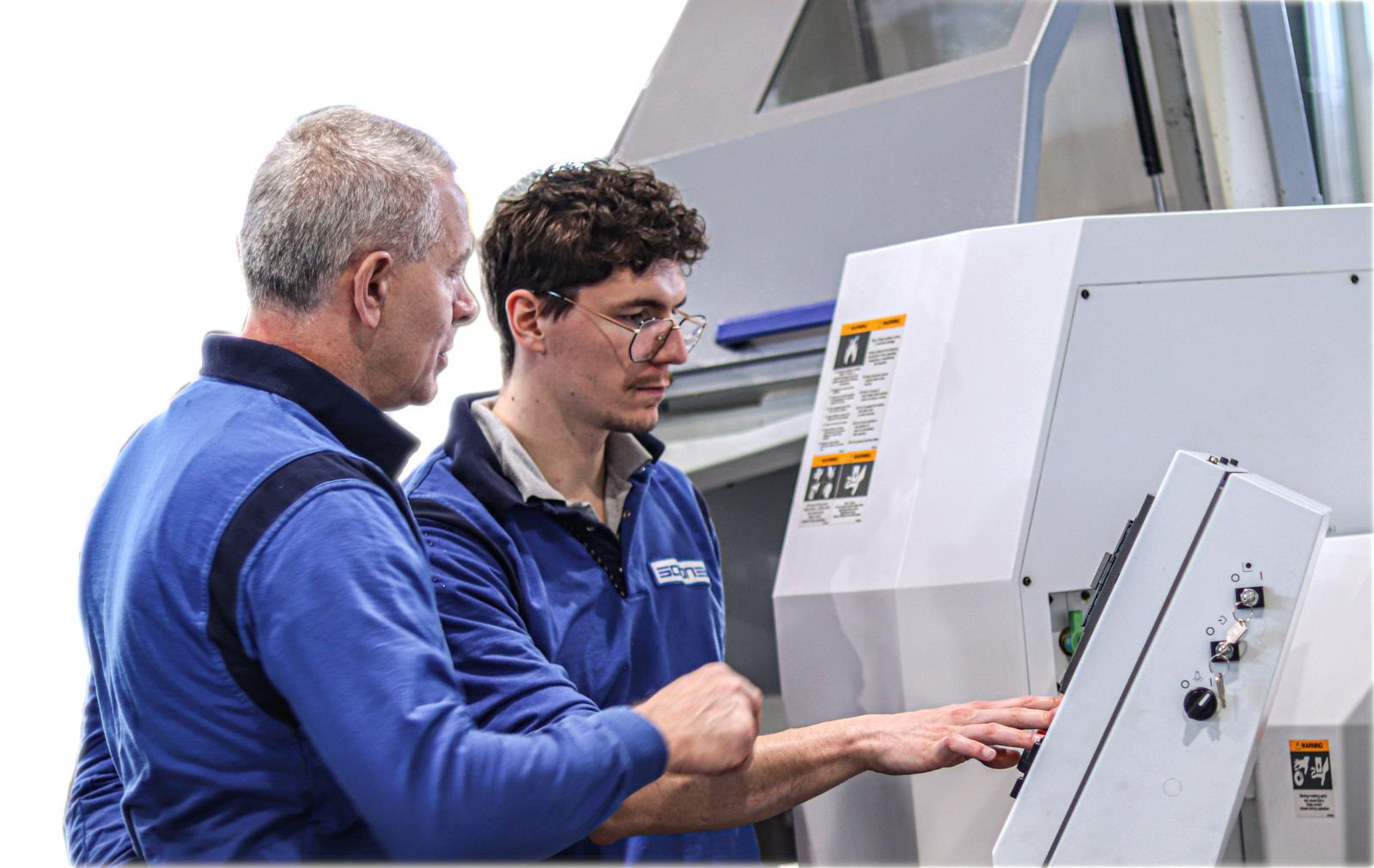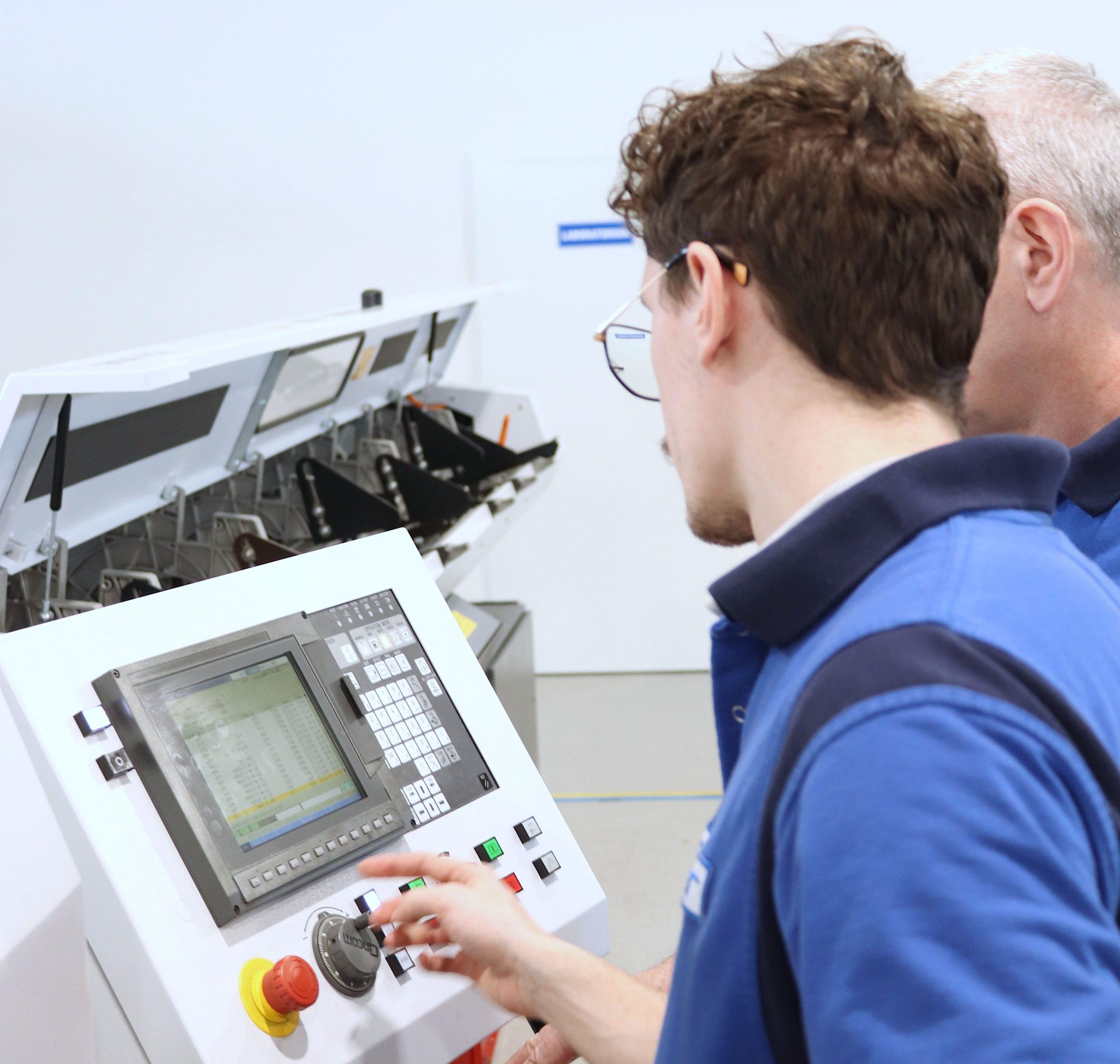De baan van CNC-machine operator

De rol van moderne CNC-bewerkingsmachines in de ontwikkeling van de beschaving
De technologische vooruitgang die zich voor onze ogen voltrekt, is zowel een kans als een uitdaging voor de moderne wereld. Moderne machines maken een efficiëntere en goedkopere productie van goederen voor consumenten mogelijk. Robots verlossen arbeiders van uitputtende of monotone taken.
Aan de andere kant is er echter een wijdverspreide bezorgdheid over de vraag of voortschrijdende automatisering banen zal wegnemen die voorheen voorbehouden waren aan mensen. Is het mogelijk dat mensen en automaten naast elkaar bestaan in de moderne werkomgeving?
Om deze vraag te beantwoorden, kijken we hoe de rol van machinebestuurders door de geschiedenis heen is veranderd.
Het is niet overdreven om te zeggen dat werktuigmachines de moderne wereld hebben gecreëerd. Van de eerste nauwkeurige draaibank – gebruikt door James Watt om de stoommachine te maken – tot de eerste commercieel beschikbare CNC-bewerking in de jaren 1950, hebben werktuigmachines geleid tot veel van ’s werelds laatste technologische revoluties. Met de implementatie van CNC-besturing (Computer Numerical Control) werktuigmachines zou de toegang tot goedkope huishoudelijke apparaten mogelijk zijn, zouden vliegreizen nog steeds beperkt zijn tot een paar enthousiaste individuen en zouden kleine producenten niet kunnen concurreren met massaproductie.
Naarmate het technische niveau van machines zich ontwikkelt, groeit ook de rol van machinebedieners. Hun rol is geëvolueerd van ambachtslieden naar draaiers of frezers tot de operators van vandaag die voor een computer zitten en een machineprogramma aanpassen.
In dit artikel kijken we naar de geschiedenis van CNC operators. Het bedienen van CNC-bewerkingsmachines is slechts een volgende stap in een lange geschiedenis van veranderend werk.
Vroege geschiedenis: de oude Egyptische tweemans draaibank
De oude Egyptenaren ontwikkelden de eerste machine vóór computers en de industriële revolutie. Rond 1300 voor Christus vonden ze de draaibank uit. Egyptische draaibanken vereisten twee operators om het werkstuk te draaien en te snijden met een geslepen gereedschap. Veel werktuigmachines werkten op deze manier tot de Industriële Revolutie omdat er geen gemakkelijke manier was om het werkstuk te draaien. De oude Egyptenaren gebruikten deze methode om hout te vormen en stenen kommen te bewerken. Zij introduceerden ook het idee om met harde edelstenen te snijden, wat wij nog steeds gebruiken voor diamantgereedschap.
De 18e eeuw: machinebedieners als ambachtslieden
Laten we naar de 18e eeuw gaan. Bedieners van werktuigmachines als afzonderlijk beroep bestonden niet. In plaats daarvan bouwden ambachtslieden werktuigmachines om hun producten te maken. Deze ambachtslieden bedienden hun eigen werktuigmachines. Alle werktuigmachines werden in hoge mate aangepast aan de productiebehoeften van een bepaalde ambachtsman.
In sommige opzichten was dit vergelijkbaar met hoe we vandaag de dag omgaan met werktuigmachines. Massaproductie neemt af en kleine fabrikanten zijn op zoek naar machines die gemakkelijk aangepast kunnen worden aan hun snel veranderende producten. We bouwen niet langer onze eigen werktuigmachines – zoals de vroege ambachtslieden deden – maar aangepaste bewerkingen en opspanningen maken nog steeds een groot deel uit van het werk van de machinebediener. De nauwkeurigheid van deze vroege werktuigmachines was laag. Aan het einde van de 18e eeuw had James Watt een nauwkeurige manier nodig om een cilinder voor zijn stoommachine te produceren. Industrieel John Wilkinson vond een machine uit die nauwkeurig grote cilinders kon boren, waarmee de industriële revolutie en de opkomst van CNC-bewerkingsmachines begon.
De 19e en 20e eeuw: moderne werktuigmachinebestuurders
Het moderne werk van machinebedieners begon in het begin van de 19e eeuw. Uitvinder Henry Maudslay wordt beschouwd als de grondlegger van werktuigmachines. Hij en zijn werknemer Joseph Whitworth introduceerden standaardisatie in de productie. Rond deze tijd bracht Matthew Murray de eerste commerciële werktuigmachine uit.
Dit betekende dat de taak van de machinebediener opnieuw veranderde. Gestandaardiseerde machines betekenden dat ze niet langer op maat gemaakte werktuigmachines hoefden te bouwen, maar bekwame operators werden.
Tegen 1840 was er een hele reeks commerciële werktuigmachines beschikbaar: universele draaibanken, draaibanken met een revolver, freesmachines, automatische draaibanken en metaalschaafmachines.
Vanaf dat moment tot vandaag de dag omvat het werk van machinebedieners:
Machinebedieners zijn bekwame technici. Ze ontwerpen misschien niet zelf producten, maar ze kunnen een slecht ontwerp herkennen en zijn in staat om de juiste gereedschappen en processen voor de taak te selecteren.
Het computertijdperk: CNC-bewerkingen verschijnen
In de jaren 1950 verschenen de eerste machines met numerieke besturing (NC). Dit luidde een tijdperk in van snelle veranderingen voor machineoperators.
John T Parsons was een autodidactische machinist. Hij produceerde propellers voor de Tweede Wereldoorlog toen hij op het idee kwam om ponskaarten te gebruiken om werktuigmachines direct te bedienen. Hij stuitte op een technisch probleem en werkte samen met MIT om het op te lossen. Samen produceerden ze de eerste NC freesmachine. Parsons was geschokt toen MIT de uitvinding overnam en hem uit het project duwde. Het begin van het CNC tijdperk werd echter werkelijkheid en sommigen beschouwen hem als de vader van de Tweede Industriële Revolutie.
De eerste NC machines hadden hun programma’s opgeslagen op ponskaarten. Om een programma te wijzigen, moest de hele kaart opnieuw worden gestart of moest er een gaatje worden geplakt en een nieuwe worden geponst in het geval van kleine wijzigingen. Het was altijd de taak van de machinebedieners om de bewerkingen te plannen. De operators moesten hun plannen echter voor het eerst in abstracte programma’s draaien. Handmatig programmeren met ponskaarten duurde lang – het duurde tot acht uur om een programma te schrijven voor het frezen van een enkel onderdeel.
In 1956 werden computerprogrammeervaardigheden opgenomen in de functiebeschrijvingen van machineoperators. Onderzoekers van het MIT ontwikkelden de eerste CNC programmeertaal, G-Code, waarbij computers werden gebruikt om punten te plannen. Die acht uur programmeren is nu teruggebracht tot slechts 15 minuten. Computerondersteund ontwerp (CAD) kwam op rond 1960 en al in 1963 produceerde General Motors het eerste CNC-bewerkte prototype op basis van een 3D CAD-model. Het werk van de machinebedieners van vandaag omvat nog steeds alle taken die het in 1840 deed. Daarnaast hebben machinebedieners nieuwe vaardigheden moeten leren, zoals programmeren in G-code en werken met CAD-modellen.
De 21e eeuw – automatisering en robotisering en
CNC-machine operator
Recente ontwikkelingen betekenen nog een verandering voor machineoperators. Door het bedienen van machinerobots kunnen kleine fabrikanten hun productiviteit verhogen door een robot te gebruiken voor het laden en ontladen van onderdelen in een CNC-bewerking. De vaardigheden die nodig zijn om een robot te programmeren zijn een natuurlijke progressie van de vaardigheden die nodig zijn om CNC machines te programmeren. Als je G-code kent, is het zelfs heel eenvoudig om een collaboratieve robot te programmeren.
Daarom is deze laatste verandering in het werk van machineoperators minder drastisch dan sommige eerdere veranderingen. Machinebedieners hebben nog steeds dezelfde vaardigheden nodig als vroeger. Nu kunnen ze “robotprogrammeur” aan de lijst toevoegen.
